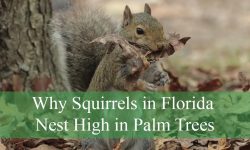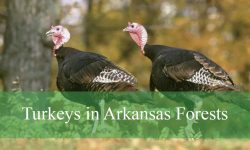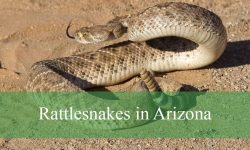Montana’s rugged wilderness, from the sweeping prairies to the towering peaks of Glacier National Park, is home to some of North America’s most iconic predators—wolves and coyotes. Both species are skilled hunters and vital components of the ecosystem, but as human development and shifting wildlife patterns alter their habitats, one intriguing question continues to surface: Are wolves in Montana crossbreeding with coyotes?
The idea of wolf–coyote hybrids, sometimes called “coywolves,” has fascinated scientists and wildlife enthusiasts alike. Reports of unusually large coyotes or strangely small wolves have sparked curiosity—and sometimes confusion—about what’s happening in Montana’s wildlands. This article explores the truth behind those claims, the biological barriers to hybridization, and what science really says about wolf–coyote genetics in Montana.
Understanding Wolves and Coyotes in Montana

The Gray Wolf’s Comeback
Once nearly eradicated from the state, gray wolves (Canis lupus) have made a dramatic return to Montana’s ecosystem. Following their reintroduction to Yellowstone National Park in the mid-1990s, wolves quickly spread into the northern Rockies, including much of western and central Montana.
Today, Montana supports a stable population of over 1,000 wolves, managed under state authority since their removal from the federal endangered species list. Wolves play a critical ecological role—controlling elk and deer populations, reshaping vegetation dynamics, and even influencing scavenger behavior.
The Ubiquitous Coyote
Coyotes (Canis latrans), on the other hand, never disappeared. They adapted remarkably well to human-altered landscapes, thriving in both rural and suburban areas. Smaller and more opportunistic than wolves, coyotes are generalist predators that eat small mammals, carrion, insects, fruits, and even garbage.
Coyotes are now found throughout Montana—from high mountain valleys to agricultural plains. Their adaptability has made them one of the most widespread mammals in North America. It’s this overlapping range with wolves that raises the intriguing question: could interbreeding occur where their territories meet?
The Biology of Hybridization
Genetic Compatibility
Wolves and coyotes share a common ancestor, and their genetic similarity theoretically allows for crossbreeding. However, biology and behavior usually stand in the way. Although interbreeding is possible in captivity, it’s exceedingly rare in the wild.
Both species belong to the genus Canis, along with domestic dogs. This means they can, under specific conditions, produce fertile offspring. But natural hybridization between wolves and coyotes requires specific circumstances—ones that Montana’s ecosystems rarely provide.
Behavioral and Ecological Barriers
Wolves and coyotes have different social structures, sizes, and ecological niches. Wolves live in tightly bonded family packs with cooperative hunting strategies, while coyotes often form smaller family groups or even live solitarily. Wolves also tend to dominate and kill coyotes that venture too close to their territory.
Because wolves view coyotes as competitors, not potential mates, aggression usually replaces attraction. For hybridization to occur, wolf numbers would have to be extremely low, leading to a shortage of mates—a condition that currently doesn’t exist in Montana.
The Myth of the “Coywolf”
Eastern vs. Western Coyotes
The term “coywolf” commonly appears in media and wildlife discussions, but it mostly refers to eastern coyote populations, not western ones. Genetic studies have shown that coyotes in the northeastern United States and parts of eastern Canada carry small amounts of gray wolf and domestic dog DNA—a result of historical hybridization events that occurred generations ago.
These eastern “coywolves” tend to be larger, stronger, and better adapted to wooded habitats. However, in Montana and other parts of the western U.S., western coyotes remain genetically pure, showing no significant evidence of ongoing wolf hybridization.
Why It Happened in the East, Not the West
Eastern coyotes expanded into territories once occupied by wolves after wolf populations were wiped out. In the absence of wolves, these coyotes interbred with the few remaining wolf-like canids in the region, producing hybrids. In contrast, Montana’s wolf population has been robust since reintroduction, and active wolf packs strongly suppress coyote expansion into their core territories. As a result, there’s no ecological void or mating pressure to encourage hybridization.
Scientific Evidence from Montana
DNA and Field Studies
Extensive genetic studies conducted by wildlife agencies and universities in the northern Rockies show no current evidence of wolf–coyote hybridization in Montana. Researchers analyzing tissue samples, scat, and DNA sequences consistently find distinct genetic profiles for both species.
For instance, data collected by the U.S. Fish and Wildlife Service and Montana Fish, Wildlife & Parks (FWP) indicates that the wolf genome in Montana remains pure gray wolf, with no measurable coyote admixture. Similarly, coyote DNA samples show no wolf alleles. These findings suggest that, unlike in eastern North America, crossbreeding between wolves and coyotes is not happening in the state’s wild populations.
Isolated Historical Cases
There have been occasional, isolated reports of wolf–coyote hybrids in parts of western Canada, where populations overlap in sparsely populated areas. However, these instances appear to be extremely rare and short-lived, producing hybrids that often fail to establish breeding populations. There’s no verified record of such hybrids establishing themselves in Montana’s ecosystem.
Why Hybridization Is So Rare in Montana
Size and Mating Behavior
A major factor preventing hybridization is the size difference between wolves and coyotes. Wolves in Montana typically weigh between 80 and 120 pounds, while coyotes average around 25 to 40 pounds. This size gap makes natural mating difficult and risky, particularly for smaller female coyotes.
Additionally, wolves and coyotes have different breeding schedules and mating rituals. Wolves breed from late January through March, while coyotes typically breed in February or early March. Though these periods overlap slightly, the differences in behavior and pack hierarchy make crossbreeding nearly impossible.
Territorial Conflict
Wolves are highly territorial predators that actively exclude coyotes from their range. Studies in Yellowstone and Glacier National Park show that wolves routinely kill coyotes to eliminate competition for prey. In such an environment, the opportunity for interbreeding is virtually nonexistent.
Coyotes, sensing the threat of wolf presence, often avoid core wolf territories entirely. Instead, they thrive in agricultural lands, open prairies, and suburban fringes where wolves rarely venture.
What Hybrids Would Mean for the Ecosystem
If wolves and coyotes were to hybridize in Montana, the implications could be significant. Hybrid canids might blur ecological roles, potentially affecting prey dynamics and conservation strategies. However, since Montana’s wolves and coyotes remain genetically distinct, wildlife managers can manage each species according to its natural behavior and population needs.
Predator-Prey Balance
Wolves primarily hunt large ungulates like elk and deer, while coyotes target small mammals and carrion. Hybridization could create an animal with intermediate size and diet, potentially altering the balance of predation pressure on various prey species.
Conservation Concerns
From a conservation perspective, maintaining genetic purity in wolf populations is critical for preserving the species’ evolutionary integrity. Wolf–coyote hybrids could complicate recovery efforts by introducing mixed traits and unpredictable behaviors. Fortunately, this concern remains largely hypothetical in Montana.
Human Influence and Hybrid Risks
Domestic Dogs as a Third Factor
While wolves and coyotes rarely interbreed with each other, both occasionally mate with domestic dogs (Canis lupus familiaris), particularly in areas with human settlements. Coydog and wolfdog hybrids are known to occur, though they rarely survive well in the wild.
In rural Montana, such events are exceedingly uncommon because wild canids are naturally wary of human environments. Nevertheless, these potential interactions underline how human presence can indirectly influence canid genetics.
Habitat Changes and Future Scenarios
As human development fragments habitats, coyotes are increasingly pushed toward the periphery of wolf territories. Some researchers suggest that if wolf populations ever decline dramatically—through overhunting or disease—hybridization could become more likely. For now, Montana’s healthy wolf population acts as a natural genetic barrier against such events.
Comparing Montana to Other Regions
Yellowstone as a Case Study
Yellowstone National Park, straddling Montana’s border, provides one of the best-documented examples of wolf–coyote interactions. Since wolves were reintroduced there, the park’s coyote population declined by up to 50% due to wolf competition. This drop in numbers reflects intense interspecific conflict, not interbreeding. The park’s research teams have documented no evidence of hybrid pups.
The Great Lakes and Eastern U.S.
In contrast, areas like Ontario, Quebec, and the northeastern United States have long-established hybrid populations. Genetic testing reveals that these “eastern coyotes” carry roughly 10–20% wolf DNA, mostly from historical events over a century ago. These populations evolved in regions where wolves were nearly extinct, creating conditions favorable for hybridization—conditions absent in Montana’s wolf-rich ecosystems.
Key Takeaways
- Wolves and coyotes in Montana do not currently crossbreed.
- Genetic testing confirms both species remain distinct.
- Behavioral, ecological, and size differences prevent hybridization.
- Wolf presence actively suppresses coyote numbers in shared habitats.
- Hybridization is mainly an eastern North American phenomenon, not a Montana one.
- Maintaining pure wolf populations is crucial for ecological balance and conservation.
FAQs About Wolves and Coyotes in Montana
Are there any confirmed wolf–coyote hybrids in Montana?
No. Despite anecdotal reports, no verified genetic evidence supports the presence of hybrids in Montana’s wild populations. Both wolves and coyotes remain genetically distinct.
Why can wolves and coyotes interbreed but usually don’t?
They share similar DNA and can produce viable offspring, but behavioral and ecological barriers—including aggression, size disparity, and pack dynamics—make natural mating extremely unlikely.
Have wolves ever killed coyotes in Montana?
Yes. Wolves frequently kill coyotes that encroach on their territories. This behavior is a natural form of competition control, ensuring that wolves maintain dominance over food resources.
What is a coywolf?
The “coywolf” refers to hybrid animals found primarily in eastern North America. These animals are not found in Montana, where coyotes remain pure Canis latrans.
Could hybridization happen in the future?
It’s theoretically possible if wolf numbers drop drastically or habitats change. However, as long as wolf populations remain healthy, hybridization will remain extremely rare.
Do coyotes and wolves ever cooperate?
No. Wolves view coyotes as competitors, not allies. Coyotes may scavenge wolf kills after the pack leaves, but they avoid direct encounters.
Are wolf and coyote populations increasing in Montana?
Wolf populations are stable under state management, while coyotes continue to thrive, especially in agricultural and suburban regions.
How do wildlife managers monitor hybridization risk?
Agencies use DNA testing from scat, hair, and tissue samples collected statewide. So far, every sample has confirmed genetic purity for both species.
Do wolf–dog hybrids exist in Montana?
Occasionally, yes—but mostly in captivity or as illegal pets. These hybrids struggle to survive in the wild due to behavioral and social disadvantages.
Why does hybridization matter to scientists?
Hybridization affects species identity, conservation strategies, and ecological roles. Understanding where and why it happens helps maintain balanced ecosystems.
Final Thoughts
The idea of wolves and coyotes interbreeding in Montana captures the imagination, but scientific evidence tells a clear story: it’s not happening—at least not naturally or at any meaningful scale. Wolves dominate the ecosystems they inhabit, while coyotes thrive along the edges, each perfectly adapted to their ecological niche.
Hybridization between these two predators is largely a phenomenon of the eastern United States, where wolves were wiped out and ecological pressures drove coyotes to fill the void. In Montana, by contrast, both species coexist under stable conditions that discourage crossbreeding.
As Montana continues to manage its wolf populations and conserve its wild landscapes, understanding the dynamics between wolves and coyotes remains vital. Not because hybridization is occurring—but because it reminds us how complex and beautifully balanced nature’s design can be. The line between species, much like the wilderness they roam, is shaped not just by biology, but by the powerful forces of ecology, behavior, and time itself.






